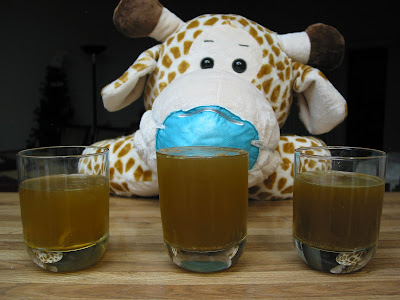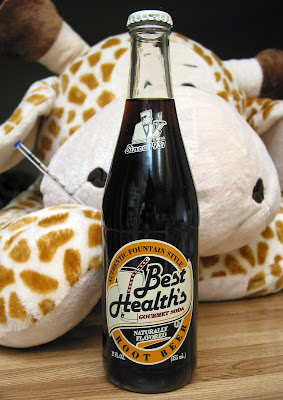 The Pooj has no naturally-occurring substitutes.
The Pooj has no naturally-occurring substitutes.
(Whole Foods Market, October 2011)
The herb stevia, also called sweetleaf and sugarleaf, has been used for millennia in South America as a natural sugar substitute. Here in the US, steviol glycosides derived from stevia were approved for use as food additives only back in 2008 but were already available as dietary supplements, and while still dietary supplements became the namesake for Zevia soft drinks. Rebaudioside A, better known under the trade name Reb-A (which Zevia uses), are anywhere from 40 to 300 times sweeter than sugar, yet have no calories and negligible affect on blood sugar. Stevia is actually only Zevia’s secondary sweetener – the primary sweetener is erythritol, a sugar alcohol produced by fermenting glucose with yeast. Erythritol has at most 70% of sugar’s sweetness, but because is barely absorbed by the body, and therefore simply expelled as waste after consumption, also has negligible calories. I’m not ready to jump on any sugar substitute’s bandwagon, naturally occurring or otherwise, but since I’m securely on board root beer’s bandwagon, I figure I’ll give it a fair shot.
Aside from the thin texture and lingering aftertaste you typically get with alternatively-sweetened beverages, Zevia Ginger Root Beer is actually pretty good. Most sugar-free sodas only differ from their sugar-sweetened originals by using artificial sweetener, but Zevia seems to benefit from being sugar free from the start since this basically requires an actual root beer formula. Zevia’s creators certainly put in their time in the lab, evidenced by the inclusion of wintergreen oil, anise oil, lemon oil, and orange oil in the ingredient list, as well as the ginger extract that the “Ginger Root Beer” title implies. Despite that title, and thankfully so, there’s actually very little ginger flavor, save for the subtle lingering heat you get in the back of the throat (not that I have a problem with ginger – I just don’t want it to be the dominant flavor in my root beer). For the most part, it’s wintergreen and licorice in the scent and the taste, with maybe a little tangy-ness from the citrus oils (or at least from the psychological effect of knowing they’re there). I’m actually surprised the root/herb flavors are not more prominent, given the very deep old-fashioned root beer scent – a scent that would normally portend a rich, smooth flavor in other sugar-sweetened brews, reinforcing my theory that real sugar adds as much texture as it does sweetness. Perhaps a root beer’s chosen sweetener can be likened to the vessel on which its root-y, herb-y goodness is delivered, where sugar is the smooth sailing yacht and sugar substitute is really more of a raft that’s just seaworthy enough to get from Point A to Point B. Comfort of travel aside, however, the lack of sugar is not a bad thing here since it allows the root-y flavors to take the main stage.
I typically reason that if I need to start drinking sugar-substitute beverages, then I should probably be cutting sugary beverages from my diet to begin with, and Zevia doesn’t change my mind all that much in that regard. On the off chance I ever get to the point that I’m posting new root beer write-ups daily, any readers would serve me better to just tell me to stop drinking root beer every day… As with most flavor enhancers, sugar is not a bad thing when consumed in moderation – in fact, it is a good thing when it comes to root beers, as my nautical analogy above would suggest. But if I ever had to recommend a sugar-free root beer to anyone (say a diabetic, for instance, assuming that the science about the blood sugar effects of erythritol and stevia stands the test of time), this would be it. Zevia Ginger Root Beer gets a high 3.










































